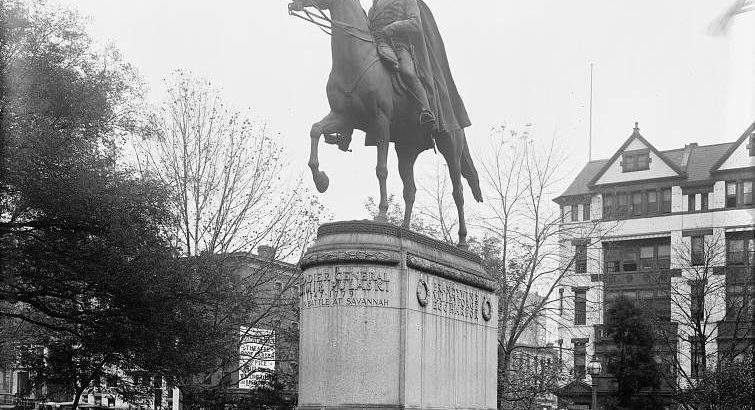Intimate Tickles Thought You Might Be Interested
Published: Mon, 05 Mar 2018 06:00:00 +0000
View Original Article

Casimir Pulaski was a military leader and cavalryman from Poland, who was exiled to Paris, France, after trying to oust the Polish king, Stanislaw II, a ruler who was seen as a puppet of Russia. While in Paris, Pulaski met Marquis De Lafayette and Benjamin Franklin, and Franklin recruited him to come to America. There he served informally during the Revolutionary War, and fought in the battles of Brandywine and Germantown. George Washington then made him a Brigadier General and the first commander of the American Cavalry. The Continental Congress created the Pulaski Legion, made up of colonists and volunteers from France, Germany, and Poland. Pulaski died in 1779, after being mortally wounded at the Siege of Savannah. He came to be seen as a Revolutionary War hero, and towns and counties were named in his memory.
But how did he end up getting his own day? Polish immigrants began arriving in Chicago in the 1860s, and in the following decades the city came to have one of the largest Polish populations in the country. Pulaski had been seen as a hero in his homeland, and immigrants brought their pride for Pulaski with them to America. Polish immigrants faced discrimination in the early twentieth century. They were not Protestant, their names could not be easily pronounced by some, and some did not see them as “real” Americans. They held up Pulaski as an example of someone who was a Polish-American patriot and hero. He also was someone who had been part of America from the very beginning, illustrating how Poles had long been part of the American fabric. Americans of Polish descent began pushing for Pulaski Day as early as the 1930s. In 1933, they won a battle when Crawford Road was named Pulaski Road. In 1977, Casimir Pulaski Day became a commemorative holiday in Illinois, after lobbying was done by the Polish American Congress. It began being held on the first Monday in March, close to Pulaski’s March 6 birthday. As it was a commemorative holiday, schools and institutions stayed open. But, in 1985 it became a full public holiday, and at the governor’s discretion, schools were closed for the day, along with some banks and government offices.
Today it is not as celebrated as widely as it was in the 1980s and ’90s. This is in part due to the assimilation of the Polish into American culture, and because many moved from Chicago out into the suburbs, lessening the hold Polish culture had on the city. Illinois schools had the option of no longer having the day off beginning in 1995, and downstate schools were the first to obtain a waiver to do so. Seventy-four percent of schools were kept open by 2009, and Chicago Public Schools discontinued the holiday in 2012.
Although the day does not have the same hold on Illinois or Chicago that it once had, it is still celebrated by many. Pulaski became an honorary citizen of the United States in 2009. His name and image still appear all over Chicago. The Polish Museum of America preserves Polish heritage. On Pulaski Day, the president of the Polish Roman Catholic Union presides over a ceremony at the Great Hall in the museum. Behind the ceremony hangs a large painting of Pulaski being mortally wounded at Savannah. An honor guard is present in bright red and blue eighteenth-century cavalry uniforms. There is free Polish food, and the event is open to the public.
Casimir Pulaski Day is observed next on Monday, March 4th, 2019. It has always been observed the first Monday of March.
